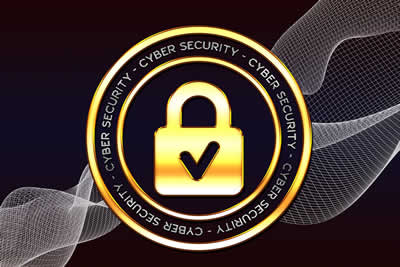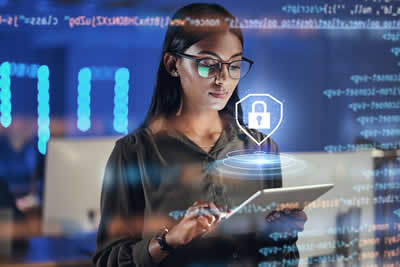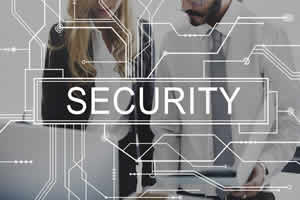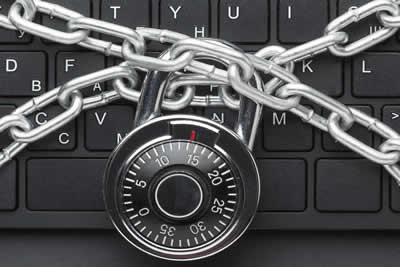We all know how cyber threats are on the rise and that businesses need to be ever more vigilant in safeguarding their data and information systems from breaches and attacks. Because of this, IT conferences have
transformed into vital hubs for exchanging insights and expertise while also building connections and creativity.
So whether you're setting up a local workshop or a major convention, the likely success of your event hinges on meticulous preparation in every area of execution. Alongside, of course, a thorough understanding of current dynamics and trends...

Defining the Aim of Your IT Security Conference
Before you get into the details of planning your event, it's important to establish the
purpose of your conference. So take a moment to think about what you hope to accomplish and who your intended audience is.
Here are a few typical aims to consider:
- Knowledge sharing: Provide attendees with the latest insights in cybersecurity
- Networking: Offer a space for people to exchange ideas and form partnerships
- Training and workshops: Host hands-on sessions with the latest tools and techniques
- Product demonstrations: Highlight a range of solutions and services available
Ensuring these objectives are well-defined will ensure the event provides value to everyone.
Arranging the Logistics: Location, Equipment and Decor
Selecting the right location is essential. It must be able to comfortably host your guests while also providing the setting for presentations, interactive sessions and networking opportunities.
When choosing a location take these factors into account:
- Capacity and layout: Ensure the venue can comfortably fit your audience and has spaces for the sessions you want to provide
- Technical requirements: Reliable internet, projectors, and sound systems are vital for presentations. And make there are enough power outlets and IT connections available
- Accessibility: Make sure the location is easy to reach, with nearby hotels and transport links
- Professional décor: This may sound a minor concern, but it's not! Small details like lighting stands and even fitted table cloths can give a polished, cohesive look to your event
Factors like these enhance the quality and professionalism of any event.
Crafting a Robust Agenda: Sessions, Speakers and Networking
An organized schedule lies at the core of a conference experience! Participants anticipate a mix of talks from IT security experts, interactive workshops and chances for networking and making connections.

So remember to include these components.
- Keynote speakers: Engage industry experts to share their insights into the latest cybersecurity challenges and trends
- Workshops: Provide hands-on sessions where people can gain experience with using the latest tools and techniques
- Panel discussions: Invite multiple specialists to discuss diverse topics like data protection or the impact of AI on cybersecurity
- Networking sessions: Allocate time for attendees to mingle and make connections, whether through organized events or, better still, casual coffee breaks
Providing a range of activities ensures that your event caters to a broad range of interests, from tech experts to business leaders.
Advertising Your Event
To draw in the audience it's essential to promote with these strategies in mind:
- Email marketing: Target IT experts and businesses with personalized email campaigns that showcase the advantages of participating in the event
- Social media: Use platforms like LinkedIn and Twitter to provide news about speakers, sessions, and exclusive content
- Sponsorships: Partner with tech firms or media platforms to boost your event. This can also help cover costs
- Event website: Create a dedicated website with all the necessary information, from registration to profiles of the speakers
Using A multi-channel approach will help your event reach a wider range of people.
Tackling Issues With Appropriate Content
In order to enhance user experiences effectively you need to tackle the cybersecurity issues of the day. Things like safeguarding data privacy and overcoming challenges like ransomware and
click fraud detection.

These are increasingly relevant nowadays, especially for businesses using online advertising. The severe financial risks posed by click fraud make it a top concern for those operating in sectors like e commerce and digital marketing.
Sessions that offer advice on these topics will connect successfully with participants.
So keep your event current and engaging!
Running the Operation
Smooth coordination on the day is a major factor in determining how successful you'll be, so here’s a mini-checklist to help you:
Registration: Have a team in place to assist with registrations, checking attendees in and directing them to their chosen sessions
Technical support: Ensure that technical teams are available to fix any issues with microphones, Wi-Fi connections, or audio visual equipment
Time management: Keep all sessions running on schedule to maintain a full sense of professionalism
Feedback: Collect participant feedback using digital surveys or traditional paper forms so you can assess what worked well, as well as areas for improvement
Look closely at the specific requirements of your event, and come up with more ideas. It would be a terrible shame for all your preparation to be compromised by confusion or mishaps on the day.
Remember that a well-organized event leaves a lasting positive impression on everyone involved.
Post-Event: Evaluating Success and Preparing for the Future
After the event is over it's important to
assess how successful it was. And start planning for what's next...
So remember that there is still work to be done. Make sure to assess the event and reflect on its outcomes:
- Review feedback from participants: Analyze feedback to understand what were the highlights, and where improvements can be made
- Follow-up: Send thank-you emails containing links to presentations or other helpful resources so you keep the conversation going
- Team debrief: Hold a meeting with your team to talk about successes and areas for improvement
Taking these post-event actions will help you to build on your conference's success and set the stage for future events.

Wrapping it Up
As you can see (and surely already knew...) planning an IT security conference involves a lot of preparation! Selecting the right location and marketing the event effectively will lay the groundwork. Focusing on critical cybersecurity concerns like click fraud is crucial for success. And if you deliver valuable insights -- along with networking opportunities in a seamless environment -- you'll create an experience that keeps people coming back year after year.
























